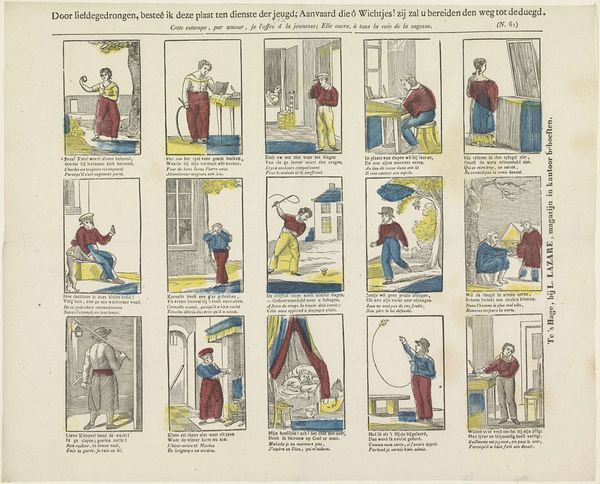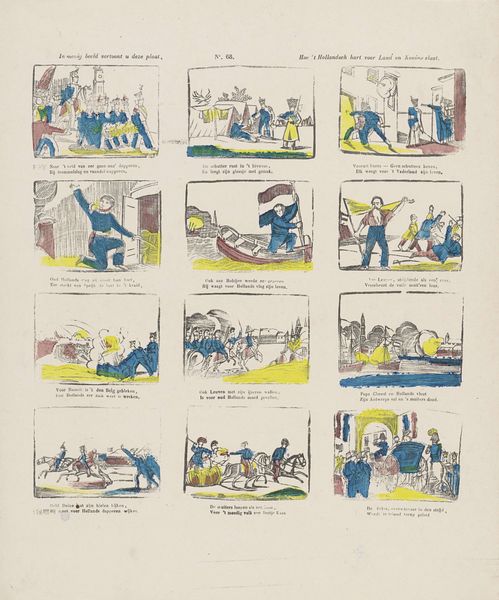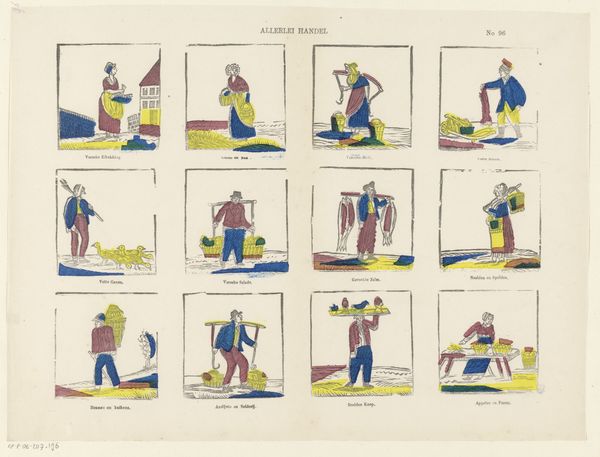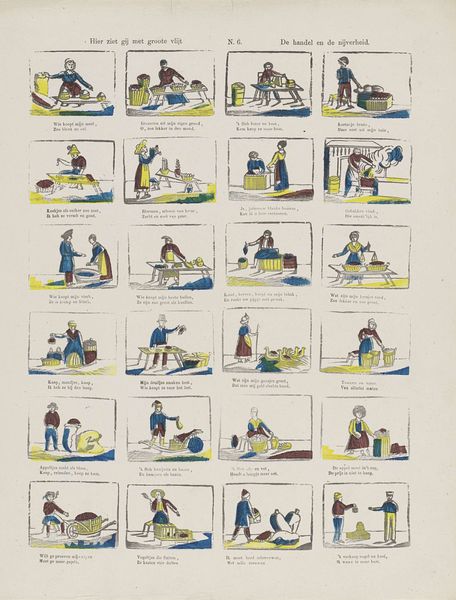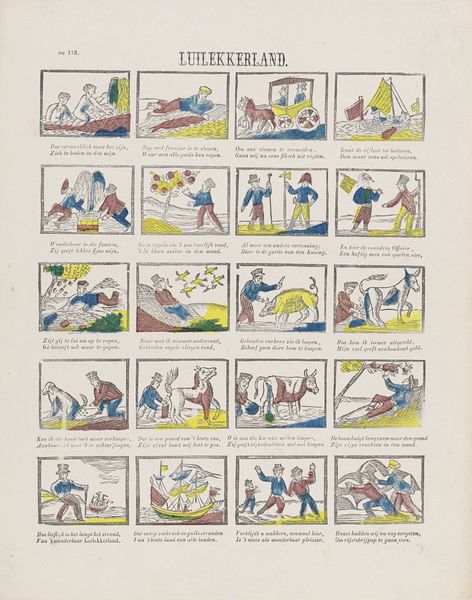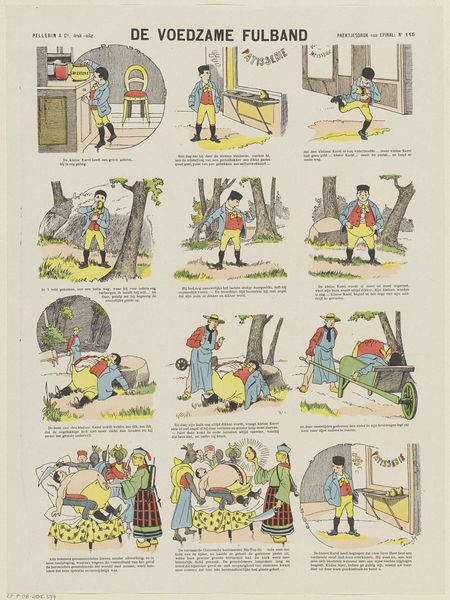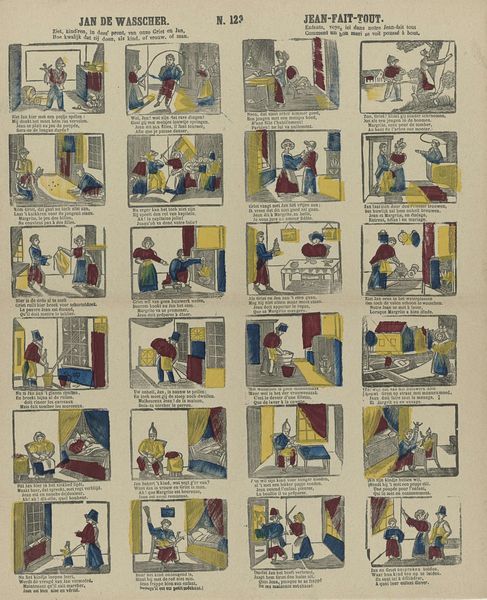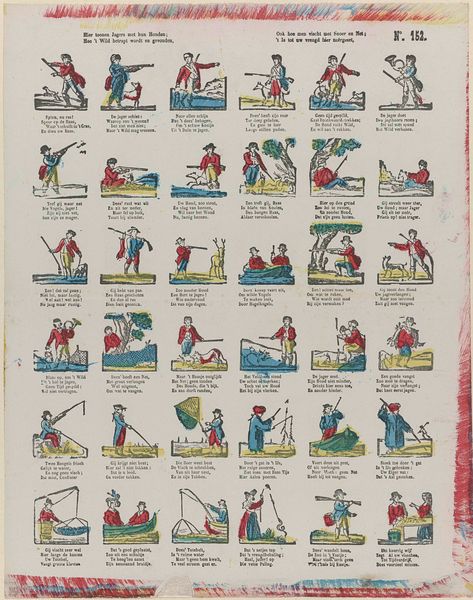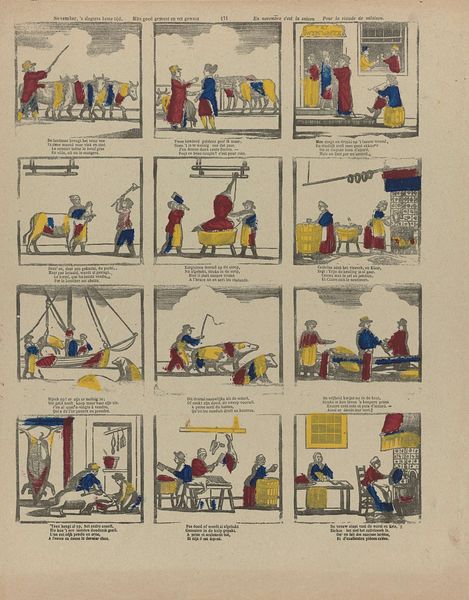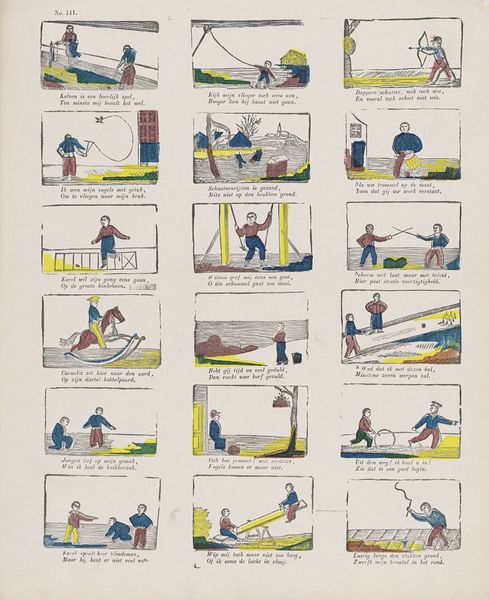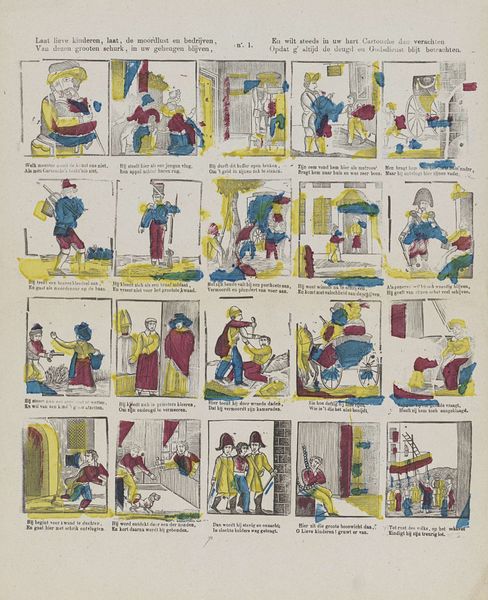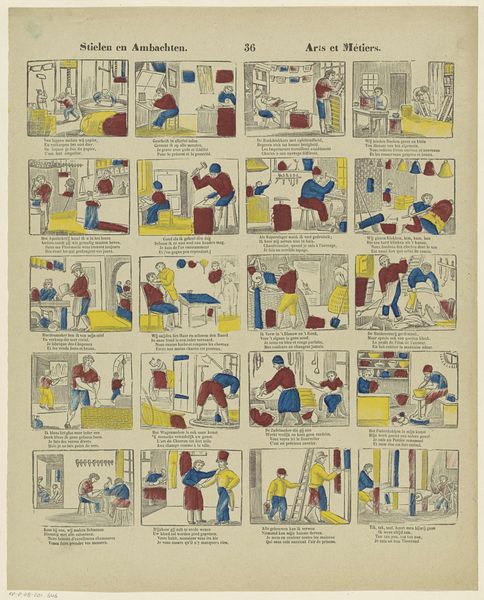
Hoe kinderen hun tyd verdryven / Kan deze prent u klaar bewyzen / Maar wat van kinders wordt begeerd, / Dat wordt u in de school geleerd 1848 - 1881
0:00
0:00
lutkiecranenburg
Rijksmuseum
print, paper, ink
#
narrative-art
# print
#
paper
#
ink
#
comic
#
genre-painting
Dimensions: height 375 mm, width 314 mm
Copyright: Rijks Museum: Open Domain
Editor: This print, made between 1848 and 1881 by Lutkie & Cranenburg, is titled "How Children Pass Their Time." It seems to depict a series of playful, albeit slightly chaotic, scenes of childhood. What stands out is the use of printed paper and ink to convey these vignettes; it's almost like an early comic strip. What do you see in this work? Curator: I see a deliberate attempt to democratize image-making through the medium of print. Consider the socio-economic context: were these mass-produced prints accessible to a broad segment of the population? The very choice of simple ink on paper signals a departure from high art traditions of oil on canvas intended for wealthy patrons. We need to consider who consumed these images and the role of production and labor of prints. Editor: That’s a good point. I hadn't thought about the economic aspect. It seems so simple, almost like children's book illustrations, that I missed the element of mass production involved. So, the materiality here isn't just about aesthetics, but about making art accessible? Curator: Precisely! Think about the labour involved, the paper makers, the ink producers, the printers themselves and the people distributing these. By shifting focus from unique, artisanal creations to potentially mass-produced items, artists and manufacturers challenged the very definition of art, emphasizing its function as a commodity consumed by the emerging middle classes. Did education, reflected in the text alongside each panel, change the lives of people from certain social classes? Editor: That’s a perspective shift for me. It challenges my understanding of "art" as something inherently precious and handmade. Curator: It urges us to look at artistic endeavors not as isolated masterpieces, but as integrated components of broader material and social networks. Editor: I see it differently now. Looking closely reveals stories about access and education, told not only through the scenes represented, but also the print process. Thanks!
Comments
No comments
Be the first to comment and join the conversation on the ultimate creative platform.
